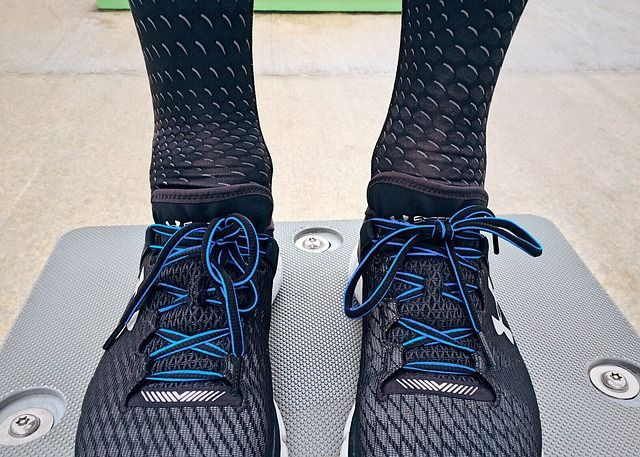Whole-Body Vibration Training May Burn Fat Just Like Regular Exercise, Plus Fight Obesity, Diabetes

Many of us admit we don't exercise because we don't have the time or the energy. We're really avoiding discomfort; we don't like sweating, being out of breath, or working out in front of people. Now, researchers at Augusta University in Georgia have found we could reap some of the same benefits of exercise by either standing, sitting, or lying still — with whole-body vibration (WBV).
"Our study is the first to show that whole-body vibration may be just as effective as exercise at combatting some of the negative consequences of obesity and diabetes," said Meghan E. McGee-Lawrence, first author of the study, in a statement.
Read More: Best Workout Programs For Overweight And Obese People
WBV requires the person to either sit, stand, or lie on a machine with a vibrating platform. As the machine vibrates, it transmits energy to the body, and muscles contract and ease multiple times each second. WBV claims to boost fitness, strength, tone, flexibility, and range of motion in a short amount of time.
This vibrating platform can be beneficial for people with obesity or diabetes who find it challenging to exercise regularly. These conditions are linked to a higher risk of fractures, which can lead to poorer bone health.
Long periods of inactivity can lead the joints to stiffen and the adjoining tissue to weaken. However, physical activity can build muscle strength, improve range of motion, and stabilize and support the joints.
In the study, published in Endocrinology, McGee-Lawrence and her colleagues sought to explore whether WBV can mimic the effects of regular exercise by exposing a group of obese mice to various programs. Researchers observed two groups of 5-week-old male mice: one group had normal mice, while the other group was genetically unresponsive to the hormone leptin, which promotes feelings of satiety after eating. For three months, mice from each group were assigned to either be sedentary, spend 20 minutes on WBV, or perform regular exercise for 45 minutes on a treadmill with a slight incline.
The findings revealed there was no significant difference seen in young, healthy mice, but both walking and WBV enhanced muscle mass and insulin sensitivity in genetically obese mice. Moreover, the obese mice gained less weight after both types of workouts than the sedentary group. In other words, the obese mice had less fat and thicker leg muscles, than their sedentary counterparts.
Typically, people who are obese have abnormally high levels of insulin, but are resistant to its effects. WBV and exercise were able to reduce insulin levels, and increased their responsiveness to the hormone. The obese mice who worked out had one-third as much fat in their liver as the normal mice. Fat tends to accumulate in the liver of people with obesity and type II diabetes, which can lead to organ malfunction and death.
Read More: The Workout Routine You Need To Burn Fat And Build Muscle
“While whole-body vibration did not fully address the defects in bone mass of the obese mice in our study, it did increase global bone formation, suggesting longer-term treatments could hold promise for preventing bone loss as well,” said McGee-Lawrence.
The idea that WBV may be an alternative to regular exercise is intriguing. However, since the study was conducted in mice, McGee-Lawrence cautions this should be rigorously tested in humans.
Vibration training is still fairly new, and more research is needed to validate its efficacy. Previous research has touted its effects on helping athletic performance. A 2014 study in the Journal of Strength and Conditioning Research observed the short-term effects of various barbell squat protocols on jumping ability, with and without WBV in a group of 15 college athletes. Each condition was performed for either one set of three repetitions (low volume) and three sets of three repetitions (high volume), followed by both one- and four-minute rest periods. The findings revealed WBV led to significant improvements in the countermovement jump height.
The use of WBV helps those who seek to be active, moving in some capacity, or recovering from a previous injury. It could potentially be used as a supplemental therapy to ward off the effects of obesity-related conditions. WBV is a passive exercise that can enhance our metabolism, increase bone mineral density, and help regulate our hormones.
Source: McGee-Lawrence ME, Wenger KH, Misra S et al. Whole-body vibration mimics the metabolic effects of exercise in male leptin receptor deficient mice. Endocrinology. 2017.
See Also:
Working Out May Prevent Future Fat From Forming
Americans Work Out More Than Ever, So Why Are Obesity Rates Increasing?



























